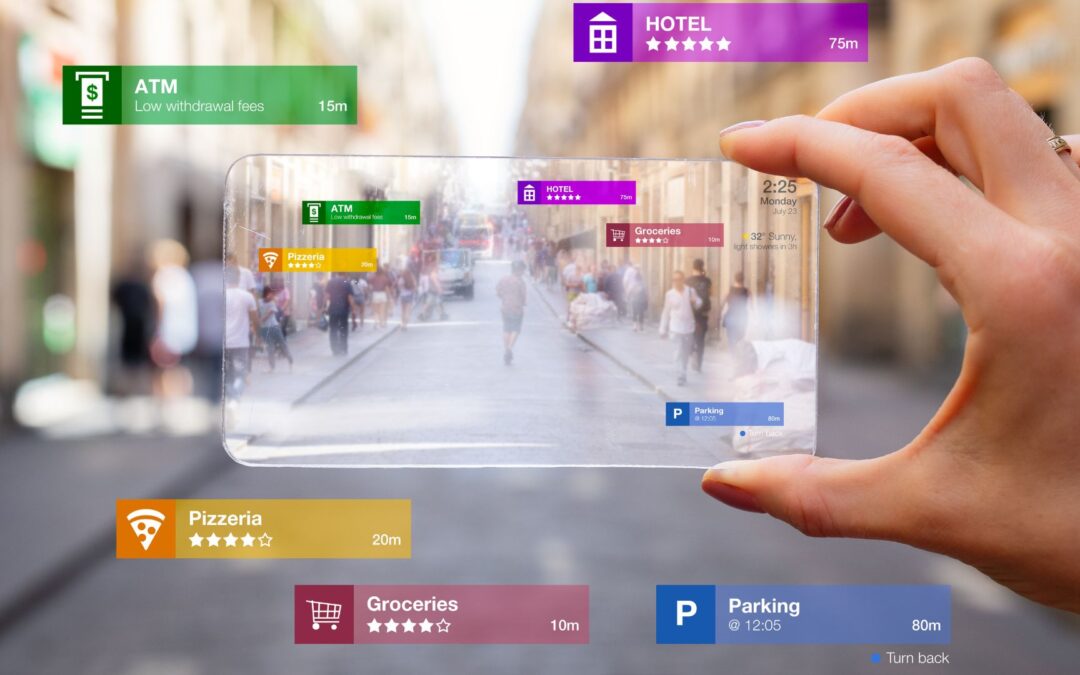In 2018, rockstar psychologist, Jordan Peterson, released his book 12 Rules for Life. The international best seller about self-reliance and self-betterment hit bookshelves and took the world by storm. I discovered that my favorite rule from his list is #2: Treat yourself like someone you’re responsible for helping. I realize now that I’ve always lived by that rule because I’ve always invested in myself as a means for knowledge and self-improvement; that’s a bet I can never lose! Like I invest in my future growth and improvement, companies need to do the same. Many brands are not yet ready for the future of marketing. After reading Peterson’s guide, I applied his thinking towards 12 rules for creating better brand experiences that leverage the latest ideas in Augmented Reality (AR), Virtual Reality (VR), and Artificial Intelligence (AI). Here they are.
Rule #1: Invest in the Future
Welcome to the future, where the digital world is your playground and marketing is a wild adventure. This means retooling your strategic planning processes, upskilling staff, and approaching product/brand experiences from new points of view. Consider how a brick-and-mortar retailer might go from only offering in-store opportunities to visualize a purchase to adding virtual try-ons through an app. We’ve seen this with native e-commerce brands for furniture and others, but not many employ this technology for BOTH online and offline shoppers. Take advantage of this white space in the marketplace to create a competitive advantage.
"*" indicates required fieldsSubscribe to our contact list
Rule #2: Reality is Overrated
The future of marketing is about creating community and extending virtual reality (VR) into the real world via what’s now called Extended Reality (XR) strategies. Embrace Web3 technology and immerse your brand in the Metaverse, where virtual experiences rule. Leave the mundane behind and create mind-blowing campaigns that teleport your audience into a whole new dimension. Create extra sensory experiences that blend realities for a lasting impression.
Rule #3: Tokenize Everything, Even Your Morning Coffee
In the new digital utopia, everything can be tokenized. From your products and services to your morning caffeine fix, create unique digital assets that capture the imagination. Let your customers trade, collect, and experience your brand in ways that were once unimaginable. Who knew a cup of coffee could become a coveted NFT?
Rule #4: Embrace the Blockchain
If you’ve got trust issues, then join the Block. Blockchain technology is here to save the day, ensuring transparency and security for your customers. Show your tech awareness by adopting decentralized systems that guarantee authenticity, traceability, and trust. Your brand will shine like a supernova in a galaxy of scams.
Rule #5: Community is Queen, So Crown Your Fans
Your customers aren’t just numbers; they’re passionate members of a vibrant community. Engage, listen, and empower them to become your brand ambassadors. Offer exclusive perks, organize virtual meetups, and reward their loyalty. In the Metaverse, your community will reign supreme, and your marketing efforts will be amplified like never before. Here are a few examples of how brands are doing this today:
- Interactive Product Demos: Instead of just showcasing your products in a traditional manner, use AR to allow customers to virtually try them out. Furniture retailers, like IKEA and Wayfair are using AR apps that let customers visualize how a particular sofa would look in their living room.
- AR Games: Develop gamified experiences that blend the real world with virtual elements. For instance, a cosmetics brand can create an AR game where users must find and catch virtual makeup items in their surroundings, earning rewards and discounts in the process. Think Pokemon GO for beauty brands.
- Bring Products to Life: Lego introduced an AR experience called Lego Hidden Side, where physical Lego sets come to life through a companion app. Users can solve mysteries and interact with virtual elements that blend seamlessly with the physical Lego sets. These are great ways for toys to extend playtime and the imagination.
Rule #6: Augment Reality and Make it Fantastically Fun
Why settle for boring old reality when you can augment it with fantastical elements? Book publishers can use AR to add interactive 3D elements to enhance storytelling. Travel and tourism companies can create a companion app that overlays historical information or 3D reconstructions to create a more immersive and memorable travel experience. Both examples transform the ordinary into extraordinary and differentiates the product/service in new ways!
Rule #7: Gamify Your Marketing and Watch Engagement Levels Soar
Life is a game, and marketing should be too. Create immersive gamified experiences that captivate your audience. Challenge their skills, reward their progress, and turn marketing campaigns into thrilling quests. The more they play, the more they engage, and the more they’ll remember your brand when the game is over. For example, NBA Top Shot is an NFT marketplace that allows users to buy, sell, and trade officially licensed NBA collectible moments. These moments are essentially digital trading cards that hold value within the Top Shot ecosystem, creating a micro-economy centered around basketball fandom.
Rule #8: Open Doors to Micro-Economies, Where Everyone Wins
Break down barriers and empower your customers with micro-economies. Enable them to buy, sell, and trade digital assets within your ecosystem. Let them earn tokens, level up, and unlock exclusive perks. In this brave new world, everybody wins, and your brand becomes the catalyst for a revolution in digital commerce. Here are some examples of how you can execute on this rule:

Nike Cryptokicks
Loyalty Programs: Implement a blockchain-based loyalty program that rewards customers with tokens that hold value within your ecosystem. These tokens can be redeemed for exclusive discounts, limited edition products, or even traded with other customers.
- Digital Collectibles: Create digital collectibles as NFTs (non-fungible tokens) that customers can collect, trade, or display. For instance, a fashion brand could release limited edition virtual sneakers that customers can purchase and then showcase in their virtual wardrobes. Nike did this brilliantly when they released a collection of 20,000 NFT Cryptokicks. According to the New York Times, one pair sold for $134K.
Rule #9: Collaborate with Virtual Influencers for More Digital Magic
The age of flesh and blood influencers is sooo last decade. Partner with virtual influencers and let their digital magic enchant your audience.

Collaborate with AI-powered personalities, like the iconic Barbie, who defy reality, raise attention and capture the imagination. With 14 Million followers before her smash hit movie, @Barbie was already #3 on a list of the Top 12 Virtual Influencers of 2023 by Virtual Marketing Hub. Lu do Magalu from Brazil tops the list with over 23 Million fans across social platforms. With their virtual charisma, your brand can shine brighter than the neon lights of the Metaverse.
Rule #10: Cross the Boundaries of Space and Time with Interactive Advertising
Traditional ads are becoming relics of the past. Break new ground with interactive advertising that transcends space and time. You’ve seen the ads with QR codes inviting consumers to scan and buy. That’s just the start. Let your customers actively participate in your campaigns, allowing them to co-create and shape the narrative. In this limitless playground, your brand becomes a never-ending story.
Rule #11: Unleash AI-Powered Personalization and Amaze Your Audience
No more generic marketing messages! Tap into the power of artificial intelligence and deliver hyper-personalized experiences. Analyze data, understand preferences, and tailor your marketing efforts to individual needs. Your fans will feel like VIPs in a world that revolves around their desires.
Rule #12: Protect Your Data Vaults and Guard Your Customers’ Trust
Executing this rule involves implementing robust data security measures to safeguard your customers’ personal information and earn their trust. In an era where data breaches can wreak havoc on brand reputation, prioritizing data privacy is paramount. Supermetrics has a great guide to get marketers started.
Remember, these examples are just the tip of the iceberg. Leveraging the potential of AR and micro-economies through Web3 technology opens endless possibilities for creating immersive and engaging marketing experiences in a futuristic realm. Let’s redefine what’s possible in the marketing landscape!
About the Author:
Simone Knight is focused on the future of digital marketing. She’s a dynamic speaker, chief marketing executive, and consultant who is obsessed with inspiring greatness through brand innovation. Connect with her at SimoneKnight.com for invitations to speak, consult, or join your Board of Directors.


